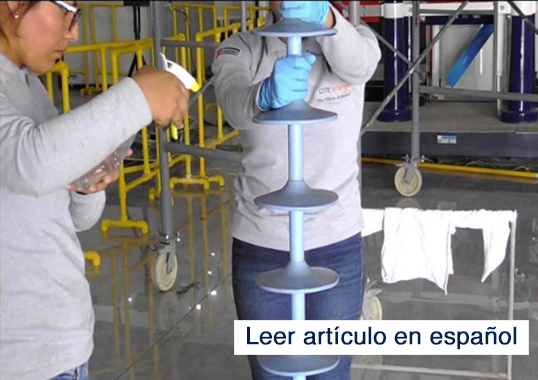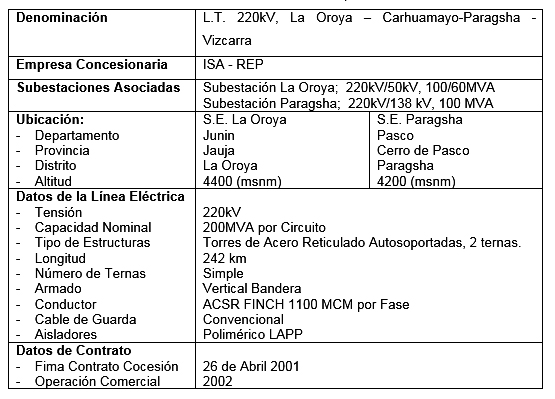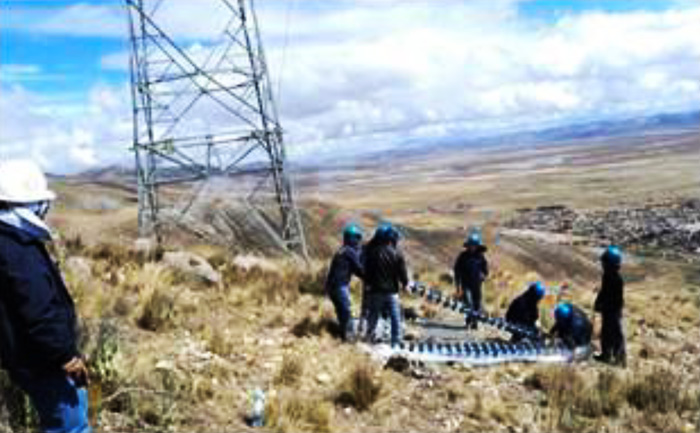NEWS
JWinsulators
any transmission lines across the globe operate at high altitude under conditions of low air pressure and relatively thin air. It is well known that voltage decreases with altitude, whether air gap discharge voltage, conductor corona inception voltage or pollution flashover voltage. The higher the altitude, the more problematic this becomes for external insulation on lines and equipment.
In China, for example, where over 60% of the land is at 1000 m or higher, research at specialized test facilities has found that insulator pollution flashover voltage at altitudes of 1000 m and 2000 m are reduced by 5.7% and 11.4% respectively, compared to sea level. Yet another consideration is whether higher sustained UV radiation causes degradation of the polymeric materials used in composite insulator housings.
Investigators in Peru recently conducted a laboratory test program to evaluate the condition of 15-year old polymeric insulators removed at random from a 220 kV line running at an average altitude of 4300 m. The research consisted of electrical, mechanical, pollution, hydrophobicity and accelerated ageing tests performed on sample insulators taken down from this line. Among the goals was to evaluate behavior of these insulators after sustained service at such high altitude and estimate useful remaining service life. This INMR edited article, contributed by César Augusto Moreno Cueva of Proyectos de Infraestructura del Peru, reviews the findings of this work.
A total of 9 test specimens were removed at random from conveniently accessed towers along the 220 kV L-2258 and L2259 La Oroya-Paragsha Lines, operated by ISA-REP and running through in the central highlands of Peru.

The insulators installed on this line had been supplied early in the 2000s and were selected based on specifications and tests according to IEC 61109.


The nine insulator specimens that comprised the test sample were carefully removed, handled, packed, transported to the CITE Energia and Delcrosa Laboratories for unpacking and preparation. The following tests were then performed on each:
1. UV accelerated ageing test;
2. Test of degree of contamination & acidity index;
3. Hydrophobicity test;
4. Test of voltage applied to industrial frequency;
5. Mechanical tensile tests;
6. Dry arc test;
7. Negative polarity impulse voltage test;
8. Inspection & evaluation of condition.
Table 3 shows the procedures set out in the following international technical standards and guidelines in the tests carried out.
Results obtained in various tests performed on a total of 9 randomly selected insulator specimens were all satisfactory and within acceptable parameters according to relevant international standards and technical guides. These polymeric insulators had been in continuous service for 15 years at an altitude of about 4000 m and subjected to adverse climatic conditions from sustained UV to ice to rainfall to high winds. Laboratory tests Prueba de Tensión de Impulso Tipo Rayo con Polaridad Negativa demonstrated conclusively that the condition of these sample insulators was good in terms of their dielectric and mechanical characteristics as well as the texture and hydrophobicity of the polymeric materials, which remained similar to that of a new insulator.